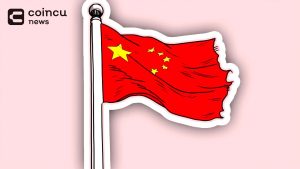Crypto media closed, bad news repeated, mining laws approved?
This weekly news aggregator from mainland China, Taiwan, and Hong Kong seeks to curate the top industry news, including impactful projects, changes in the legal landscape, and integration.
It’s been two months since the crypto crackdown and subsequent enforcement began. Most of the new stories are now just drops of previous national policies implemented at the provincial level. The most recent example comes from the Anhui provincial government when it announced a series of measures to reduce energy consumption, with cryptocurrency mining listed as the culprit. Anhui is a small province east of Shanghai known for its stunning agricultural and rural scenery rather than for its contribution to China’s economic development. It is likely that other provinces, especially those that rely on coal for energy, will make similar announcements over the summer as the central government pushes for a carbon-free future.
On July 13, Chinese mining giant Bit Mining announced that it had raised $ 50 million to expand outside of China. The company is listed on the Nasdaq and operates BTC.com, currently the top 5 for Bitcoin, Bitcoin Cash and Litecoin. This is yet another sign that Chinese miners are not giving up their domestic restrictions and are moving their data centers and mining equipment overseas instead.
The industry’s disappearance leaves a trail of impressive photographs, some of which have been published by the Caixin financial media. An image that caught social media attention shows a woman who appears to be an ethnic minority holding a pile of mining equipment and power cables that resemble a bouquet of flowers.
Hunt for gold?
Former Bitmain CEO Jihan Wu believes mining regulations will benefit the industry in the long run, pointing to an improved public image and the elimination of bad actors. It’s certainly a good thought, but right now China seems intent on getting rid of all the actors, not just the bad ones.
With the Winter Olympics in February 2022, Beijing has the perfect opportunity to show off its blue skies and clean energy industry. Additionally, China can adopt its modern digital central bank currency without the confusion of more speculative digital assets that may have superficial similarities. Those with early memories of the 2008 Summer Olympics may also remember the stringent anti-technology and social unrest regulations that preceded this landmark event.
Lowest volume in years
The effects are being felt by leading stock exchanges in China. Huobi’s BTC / USDT pair had traded just 109,000 BTC last week, the lowest weekly volume since October 2018. Global exchanges were also affected by the volume decline, but not at the level of these major Chinese exchanges. In today’s regulatory environment, there is no doubt that exchanges that actively decentralize operations and risk are better able to minimize losses due to adverse policies.
Working together for compliance?
On July 13, the Nanjing Institute of Public Security announced that it was partnering with OKLink to combat money laundering. OKLink is a blockchain technology company that has ties to OK Group, a company that formerly operated the leading exchange, OKex. Given that the governance of the exchange is under an incredible scrutiny in 2021, it’s no surprise that efforts are being made to appease regulators.
Give up the train
On July 15, crypto media company Bishijie announced that it would be closing after violating national crypto laws. Bishije, which translates as Coin World, was hugely popular in 2018, long before the depths of the last bear market cycle. However, in the most recent bull cycle, it has never fully recovered from its previous position, making this only a small loss for the current crypto space. It remains to be seen whether other media platforms on the mainland can survive this difficult period.
.
.















